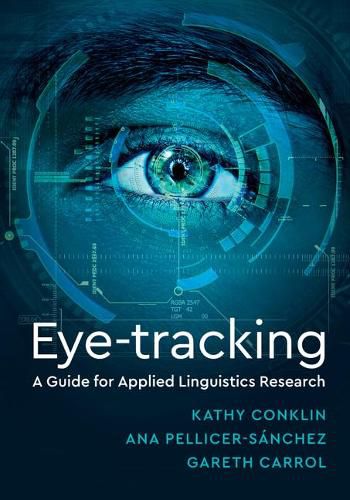Readings Newsletter
Become a Readings Member to make your shopping experience even easier.
Sign in or sign up for free!
You’re not far away from qualifying for FREE standard shipping within Australia
You’ve qualified for FREE standard shipping within Australia
The cart is loading…






Eye-tracking is quickly becoming a valuable tool in applied linguistics research as it provides a ‘real-time’, direct measure of cognitive processing effort. This book provides a straightforward introduction to the technology and how it might be used in language research. With a strong focus on the practicalities of designing eye-tracking studies that achieve the standard of other well-established experimental techniques, it provides valuable information about building and designing studies, touching on common challenges and problems, as well as solutions. Importantly, the book looks at the use of eye-tracking in a wide variety of applied contexts including reading, listening and multi-modal input, writing, testing, corpus linguistics, translation, stylistics, and computer-mediated communication. Each chapter finishes with a simple checklist to help researchers use eye-tracking in a wide variety of language studies. Discussion is grounded in concrete examples, which will allow users coming to the technology for the first time to gain the knowledge and confidence to use it to produce high quality research.
$9.00 standard shipping within Australia
FREE standard shipping within Australia for orders over $100.00
Express & International shipping calculated at checkout
Eye-tracking is quickly becoming a valuable tool in applied linguistics research as it provides a ‘real-time’, direct measure of cognitive processing effort. This book provides a straightforward introduction to the technology and how it might be used in language research. With a strong focus on the practicalities of designing eye-tracking studies that achieve the standard of other well-established experimental techniques, it provides valuable information about building and designing studies, touching on common challenges and problems, as well as solutions. Importantly, the book looks at the use of eye-tracking in a wide variety of applied contexts including reading, listening and multi-modal input, writing, testing, corpus linguistics, translation, stylistics, and computer-mediated communication. Each chapter finishes with a simple checklist to help researchers use eye-tracking in a wide variety of language studies. Discussion is grounded in concrete examples, which will allow users coming to the technology for the first time to gain the knowledge and confidence to use it to produce high quality research.